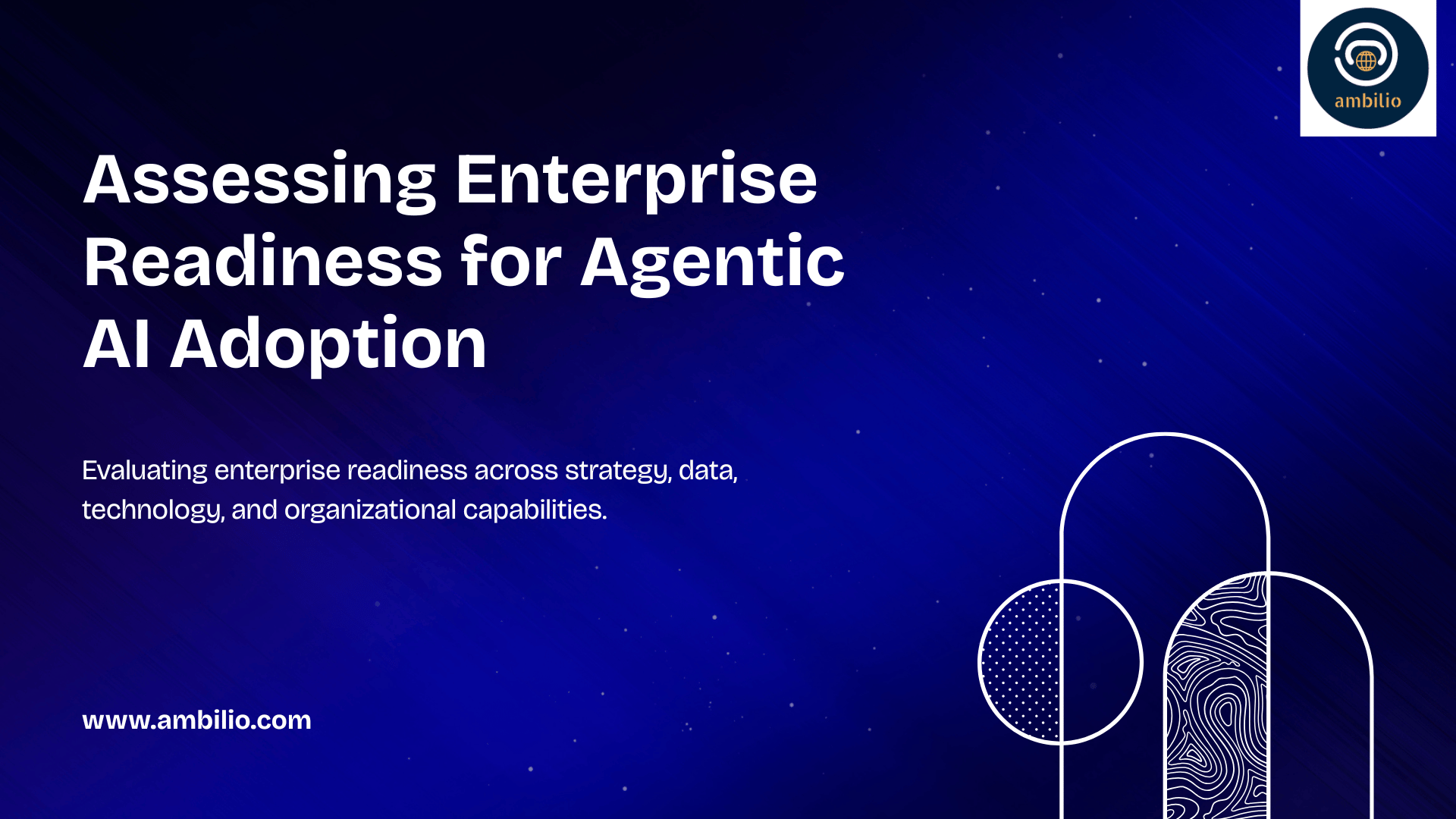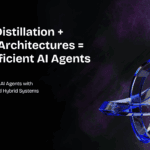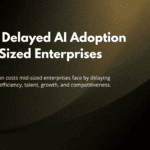Agentic AI enables systems to autonomously plan, decide, and act, offering enterprises a powerful way to improve efficiency, automate complex tasks, and support decision-making. Unlike traditional AI, these agents operate across multiple steps, adapt to feedback, and interact with tools or systems independently. However, successful adoption requires more than just technical integration. Enterprises must assess readiness across strategic alignment, data infrastructure, AI maturity, system interoperability, talent capabilities, governance frameworks, and organizational culture. Evaluating these areas ensures the enterprise can support, control, and scale agentic systems responsibly. A structured readiness assessment helps identify gaps, reduce risks, and lay a strong foundation for real-world deployment and long-term value realization.
1. Strategic Alignment with Business Goals
The first step in assessing readiness is to ask: Why do we need agentic AI?
Agentic AI adoption should be linked to clear business objectives. For instance, an enterprise may want to automate complex workflows, enhance customer service through AI agents, or manage supply chains using autonomous decision-making. But if these goals are not defined, the investment in agentic systems may lead to confusion or failure.
How to assess:
- Do we have a digital transformation strategy where AI plays a central role?
- Are we prioritizing innovation and automation as part of our business roadmap?
- Are there executive sponsors or C-level champions for AI projects?
Organizations that lack strategic clarity should first define specific, high-impact use cases where agentic AI can add measurable value.
2. Data Infrastructure and Governance
Agentic AI systems depend heavily on high-quality, structured, and timely data to make intelligent decisions. Unlike rule-based automation, agents need context: real-time signals, metadata, user preferences, and event histories.
Key readiness questions:
- Is our data unified and accessible across departments?
- Do we have strong data governance and policies?
- Is the data up-to-date, labeled, and secured properly?
Enterprises should assess whether their systems support:
- APIs or data pipelines for real-time data flow
- Metadata and knowledge graphs (to help agents understand relationships)
- Secure access control and data lineage tracking
Without clean, contextual, and connected data, agents may make incorrect decisions or fail to act entirely.
3. AI and Machine Learning Maturity
Agentic AI is built on top of foundational AI capabilities. If your organization already uses predictive models, NLP tools, or ML pipelines, you’re on the right path.
However, agentic systems often require additional components such as:
- Foundation Models or LLMs (e.g., GPT-4, Claude, Gemini)
- Tool use frameworks (e.g., LangChain, CrewAI, AutoGen)
- Orchestration and memory mechanisms (for multi-step reasoning)
- Retrieval-Augmented Generation (RAG) for grounding outputs in enterprise data
Readiness indicators:
- Presence of a central AI/ML team or CoE
- Use of MLOps tools to monitor and update models
- Experience integrating AI into business workflows
If AI is still in the experimentation phase, an enterprise may not yet be ready for fully autonomous agents. A phased approach—starting with AI copilots or workflow assistants—can help build maturity.
4. Technology Stack and Integration Readiness
Agentic AI requires a modern, API-first and cloud-friendly tech environment. Since agents often call external services, trigger automations, or write to databases, integration becomes essential.
Questions to consider:
- Do our systems expose APIs for agents to interact with?
- Are our internal tools modular and composable?
- Do we use cloud infrastructure that supports AI workloads?
Readiness also depends on the availability of:
- Event-driven architectures (for context-aware actions)
- Access to vector databases, embedding stores, or knowledge bases
- Scalable compute and GPU infrastructure (on cloud or hybrid)
If systems are heavily siloed, agents will not be able to act end-to-end—reducing their value.
5. Talent and Organizational Capability
Technology alone doesn’t ensure successful adoption. Enterprises need skilled teams who can design, deploy, and govern AI agents. This includes not just data scientists, but also developers, product managers, UX designers, and business domain experts.
Areas to assess:
- Do we have teams trained in prompt engineering, LLM orchestration, and tool chaining?
- Are there learning and development programs for AI and automation?
- Are product and business teams aligned with technical capabilities?
Also important is the availability of cross-functional teams to handle iterative development, testing, and deployment of agents in real-world settings.
6. Risk Management, Ethics, and Control Mechanisms
As agents become autonomous, risks increase. Errors in judgment, hallucinations, or unintended actions can cause damage—financial, reputational, or regulatory.
Checklist for readiness:
- Do we have explainability and observability tools?
- Are there human-in-the-loop options for review and correction?
- Do we have escalation paths and override controls?
Enterprises should define a Responsible AI framework to govern agent behavior. This includes:
- Bias and fairness checks
- Usage logs and activity audits
- Compliance with industry regulations (e.g., GDPR, HIPAA)
Failing to put these controls in place can lead to ethical breaches and legal issues.
7. Cultural and Change Readiness
Introducing agentic AI often means rethinking workflows, job roles, and decision rights. This can lead to friction or resistance if the organizational culture is not adaptive.
Signs of readiness:
- Past success with digital transformation initiatives
- Openness to experimentation and agile practices
- Support from leadership for re-skilling and change management
Clear communication about how agents will augment—not replace—human workers is essential. A strong change management plan should be in place to guide the transition.
8. Pilot and Evaluation Strategy
Before scaling agentic AI, enterprises must be able to experiment, evaluate, and iterate. Pilots help test capabilities, surface risks, and validate ROI.
Readiness questions:
- Do we have a testing environment or AI sandbox?
- Are there success metrics and KPIs defined?
- Can we run controlled A/B experiments or shadow deployments?
Start small: automate a specific process, assign a digital agent to support a single team, or use an agent for internal documentation tasks. Use these pilots to learn and refine your approach before enterprise-wide rollout.
Final Words
Agentic AI adoption is a powerful move—but it demands readiness across strategy, data, technology, people, and culture. Enterprises must ensure not only that their technical stack is robust, but also that their organizational structures, governance, and teams are prepared to support intelligent autonomy. By evaluating key dimensions such as strategic alignment, data infrastructure, AI maturity, integration capabilities, and change readiness, organizations can build a clear roadmap for agentic AI adoption, reduce risks, and create lasting impact. If you’re planning to begin, start with a structured readiness self-assessment, identify critical gaps, and run focused pilots. Partner with Ambilio to assess, prepare, and accelerate your journey with agentic AI adoption.



